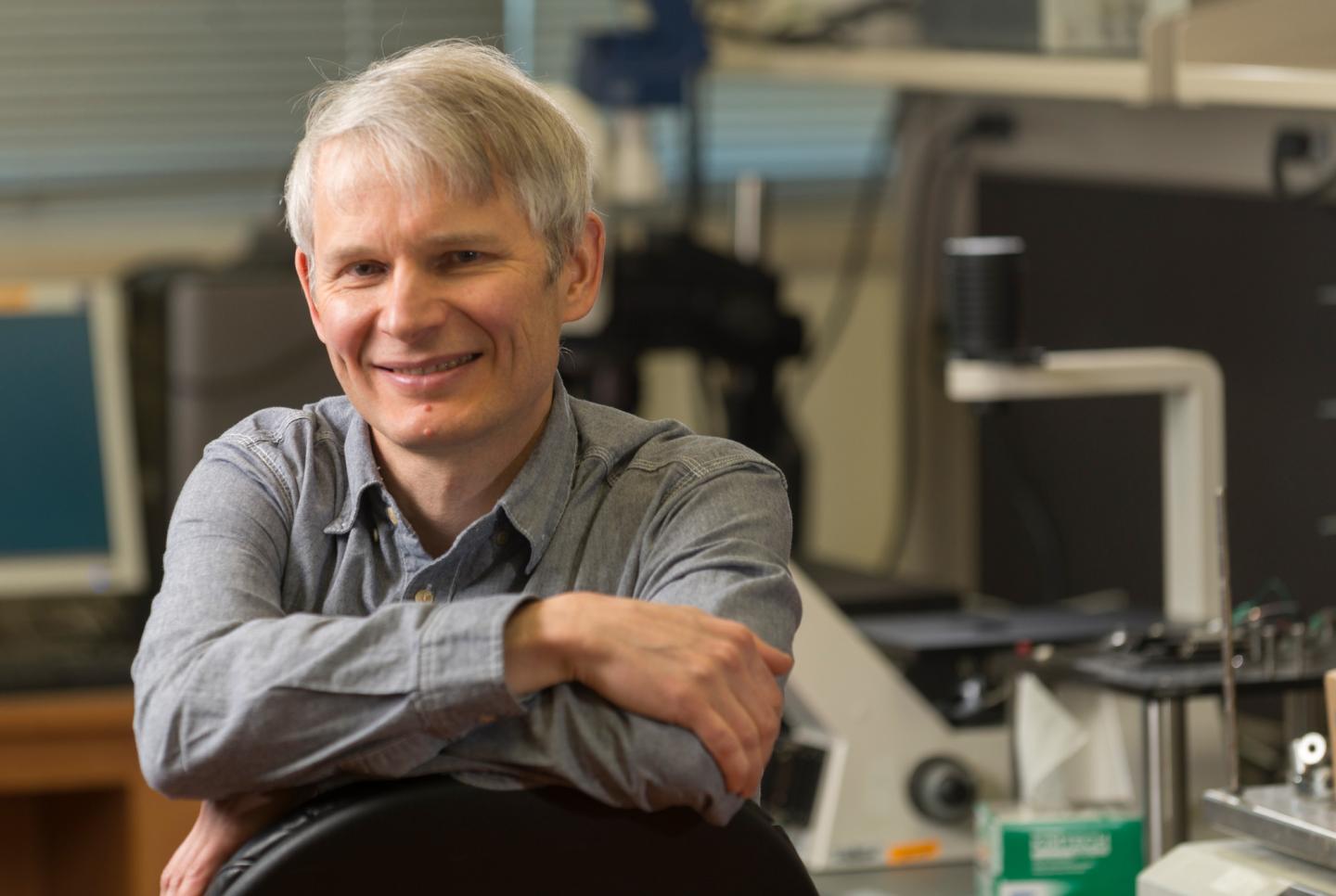
Credit: David Hungate/Virginia Tech
Scientists at the Virginia Tech Carilion Research Institute have discovered that observing fear in others may change how information flows in the brain.
The results of their study were scheduled for advance online publication today (Wednesday, Jan. 4, 2017) in Neuropsychopharmacology, the official publication of the American College of Neuropsychopharmacology.
"Negative emotional experience leaves a trace in the brain, which makes us more vulnerable," said Alexei Morozov, an assistant professor at the Virginia Tech Carilion Research Institute and lead author of the study. "Traumatic experiences, even those without physical pain, are a risk factor for mental disorders."
Post-traumatic stress disorder, also called PTSD, is an anxiety disorder that can develop in some people after they experience a shocking, scary, or dangerous event, according to the National Institute of Mental Health.
Most people who live through dangerous events do not develop the disorder, but about 7 or 8 out of every 100 people will experience post-traumatic stress disorder at some point in their lives, according to the U.S. Department of Veterans Affairs' National Center for PTSD.
"PTSD doesn't stop at direct victims of illness, injury, or a terrorist attack; it can also affect their loved ones, caregivers, even bystanders – the people who witness or learn about others' suffering," said Morozov, who is also a faculty member in the Department of Biomedical Engineering and Mechanics in Virginia Tech's College of Engineering.
He also noted that while a traumatic event may not immediately lead to the disorder, it increases odds of developing the disorder.
"There's evidence that children who watched media coverage of the Sept. 11 terrorist attacks are more likely to develop PTSD later in life when subjected to another adverse event," Morozov said.
According to a 2008 RAND Corp. assessment of multiple studies of post-traumatic stress and depression in previously deployed service members, people who heard about a serious incident — such as a gunfire exchange– were just as likely to develop post-traumatic stress disorder as the people who actually lived through the incident.
In previous studies, Morozov with Wataru Ito, a research assistant professor at the Virginia Tech Carilion Research Institute, found that rodents who witnessed stress in their counterparts but did not experience it firsthand formed stronger than normal memories of their own fear experiences — a behavioral trait relevant to some humans who experience traumatic stress.
Based on these findings, the researchers investigated whether the part of the brain responsible for empathizing and understanding the mental state of others, called the prefrontal cortex, physically changes after witnessing fear in another.
Lei Liu, a postdoctoral researcher in the lab, measured transmission through inhibitory synapses that regulate strength of the signals arriving in the prefrontal cortex from other parts of the brain in mice who had witnessed a stressful event in another mouse.
"Liu's measures suggest that observational fear physically redistributes the flow of information," Morozov said. "And this redistribution is achieved by stress, not just observed, but communicated through social cues, such as body language, sound, and smell."
According to Morozov, this shift may potentially enable more communications via the synapses in the deep cellular layers of the cerebral cortex, but less so in the superficial ones. It's not yet clear exactly how the circuits have altered, only that they have indeed changed.
"That's the next step," Morozov said. "Once we understand the mechanism of this change in the brain in the person who has these experiences, we could potentially know how something like post-traumatic stress disorder is caused."
###
The research was supported by the Virginia Tech Carilion Research Institute, Whitehall Foundation, and the National Institute of Mental Health of the National Institutes of Health.
Media Contact
Ashley WennersHerron
[email protected]
540-526-2002
@VTresearch
http://www.vtnews.vt.edu
############
Story Source: Materials provided by Scienmag





